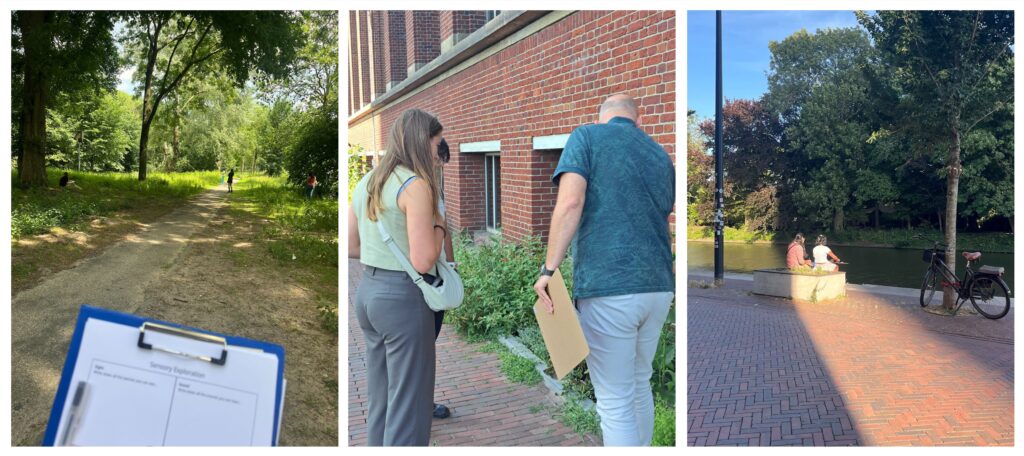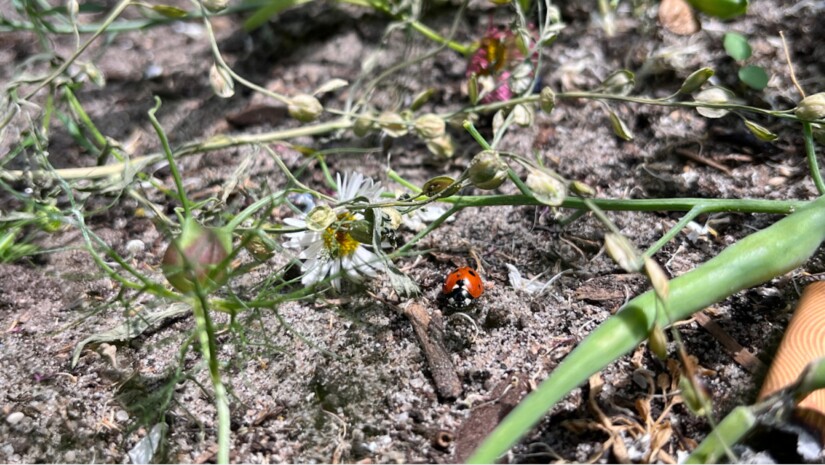At Stby, interns work on research and development projects. These projects are based on personal interests and contribute to Stby’s repository. In my project, I experimented with ways to incorporate More-than-Human (MtH) perspectives into Stby’s Streetlab Methodology.
In MtH design, it is important to realise that humans, non-humans, and the environment are interconnected and exist in relation to each other. When redesigning public spaces, we are also redesigning the homes of plants and animals that live there. Since MtH beings don’t have a voice to speak for themselves, we need to look at alternatives to include their perspectives in projects.
Include MtH perspectives to enrich conversations about the (re)design of public spaces
When a municipality has plans for (re)designing a neighbourhood, it often wants to involve residents in the early stage of the project. Stby offers the Streetlab method to do that. In conversations with local stakeholders in the neighbourhood, we collect stories from different perspectives (residents, local business owners, and frequent visitors) about the shared use of urban space. Guided discussions and visual aids, such as a large map of the neighbourhood and smaller pictographic cards with important elements in the public space, help to elicit these stories and explore problem areas. When bringing together the different perspectives, tensions and conflicts of interest also come to the surface.
To enhance the conversations we have in neighborhoods with residents, local business owners, and visitors, we should also consider the perspectives of the plants and animals that inhabit these areas. While the humans involved in Streetlabs discuss public spaces, we must remember that for the living beings in these neighborhoods, we are talking about their homes.
Two exercises created and tested to explore MtH perspectives and connect with MtH beings
In this project, two exercises that aim to connect with nature in urban environments were tested outdoors in two different locations. One exercise is Sensory Exploration and focuses on zooming out and using your senses to notice all kinds of living beings in the area. The other is creating MtH personas and asking people to zoom in on one species and speculate about their daily experiences in the area. Both exercises end with a group discussion to share findings and connect with fellow participants.

For the MtH Persona exercise, participants observed and created personas for a pigeon, a ladybug, a butterfly, ducks, and ants. Creating the personas and giving their chosen animal a name helped connect with the animal and remember them. It needs to be noted that the personas are made using imagination and are not scientific observations. One example was Billy the pigeon:
Billy lives on a university campus. He likes to sit in trees, safe from any threats like cats. He likes to watch people, and especially pays attention to whether they have any food with them. That’s why he likes to be around humans, to eat their leftovers. His main priorities are food, water, and shelter. Moreover, during the breeding season, he helps his partner make and protect the nest and raise their babies.
If Billy the pigeon could redesign something on campus, he would want more cafeterias with outdoor seating, and he would also advocate for fewer buildings with lots of glass windows. He’s seen so many fellow birds fly into these windows…”
Where most people found it exciting to explore nature in an urban environment, one participant found it quite “depressing” to notice the lack of nature and the poor conditions of nature. This participant said he would have rather done it at the park across the street. It was interesting to hear another participant counter this, saying they found it very relevant to do it in the urban environment rather than a park, because it is more important to pay attention to this area that has a lot of room for improvement. Together, these two participants started speculating about opportunities to improve the nature in this urban area, ending on a more positive and hopeful note.
Both exercises help people see a place they are familiar with in a new way and are great conversation starters
From this experiment, we learned that people, by doing these exercises, connect with their surroundings, look at it in a new way and have conversations about problems and opportunities in the neighbourhood. Streetlabs are about having meaningful conversations about daily life in the living environment, which is why including the MtH perspectives would be valuable.
Would you like to try something like this yourself?
Go outside for 15 minutes, note all the plants and animals you see, hear, smell, and possibly feel. Ideally, you do this with a notepad and pen, without the distractions of your phone. If you have a conversation partner, choose one animal or plant and together speculate about its daily life, its struggles and ambitions. If this animal or plant could redesign something in this neighbourhood, what would it want? One tip: when observing nature, you need to be aware of your own presence and the impact you might have on it. Because if you’re too loud, you will probably scare away some animals and not notice them.
Hopefully, you will leave feeling inspired with an expanded view of the lives in your surroundings. If you find yourself in a situation in the future where you notice that the perspective of plants and animals is overlooked, will you bring it up and ask critical questions?
Stephanie Kohnle
